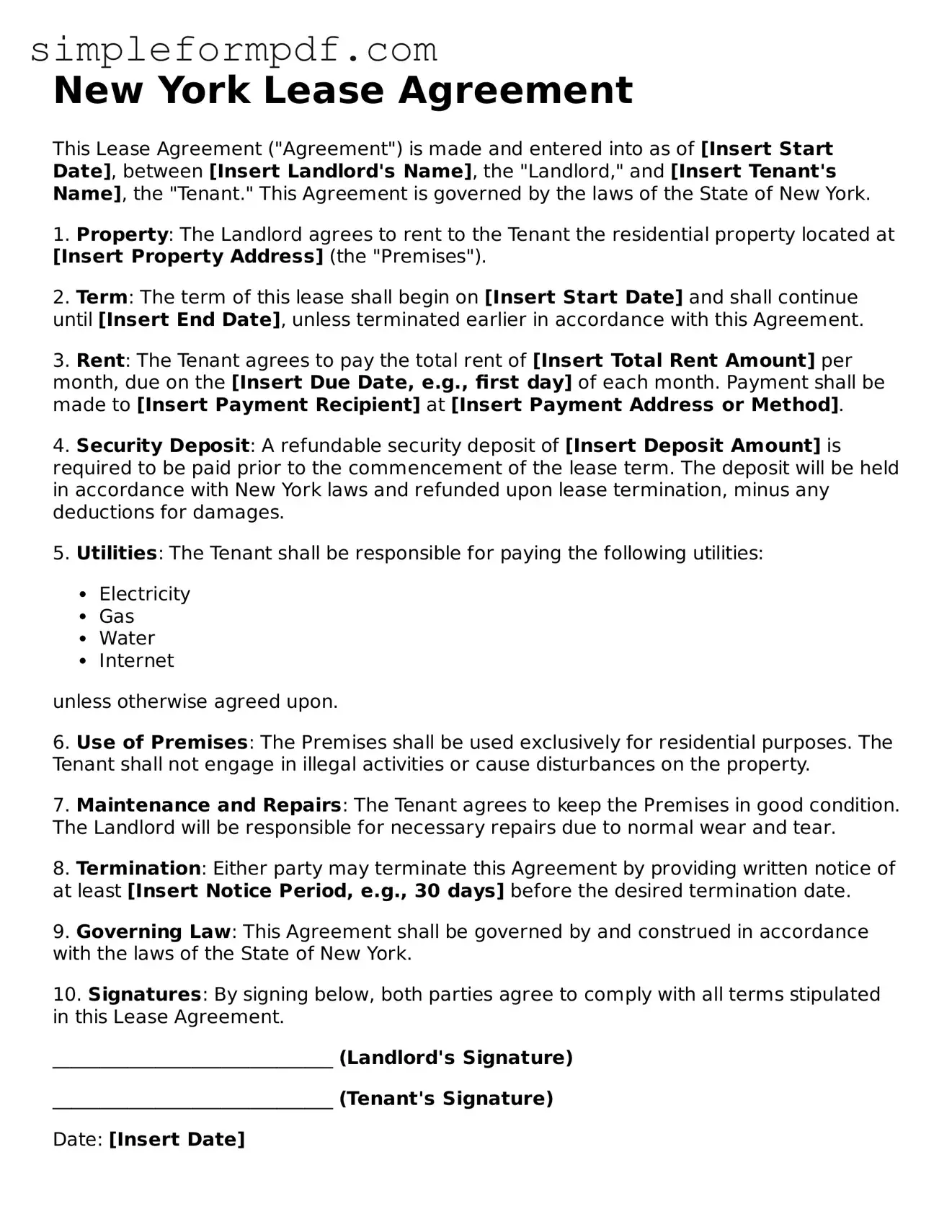New York Lease Agreement
This Lease Agreement ("Agreement") is made and entered into as of [Insert Start Date], between [Insert Landlord's Name], the "Landlord," and [Insert Tenant's Name], the "Tenant." This Agreement is governed by the laws of the State of New York.
1. Property: The Landlord agrees to rent to the Tenant the residential property located at [Insert Property Address] (the "Premises").
2. Term: The term of this lease shall begin on [Insert Start Date] and shall continue until [Insert End Date], unless terminated earlier in accordance with this Agreement.
3. Rent: The Tenant agrees to pay the total rent of [Insert Total Rent Amount] per month, due on the [Insert Due Date, e.g., first day] of each month. Payment shall be made to [Insert Payment Recipient] at [Insert Payment Address or Method].
4. Security Deposit: A refundable security deposit of [Insert Deposit Amount] is required to be paid prior to the commencement of the lease term. The deposit will be held in accordance with New York laws and refunded upon lease termination, minus any deductions for damages.
5. Utilities: The Tenant shall be responsible for paying the following utilities:
- Electricity
- Gas
- Water
- Internet
unless otherwise agreed upon.
6. Use of Premises: The Premises shall be used exclusively for residential purposes. The Tenant shall not engage in illegal activities or cause disturbances on the property.
7. Maintenance and Repairs: The Tenant agrees to keep the Premises in good condition. The Landlord will be responsible for necessary repairs due to normal wear and tear.
8. Termination: Either party may terminate this Agreement by providing written notice of at least [Insert Notice Period, e.g., 30 days] before the desired termination date.
9. Governing Law: This Agreement shall be governed by and construed in accordance with the laws of the State of New York.
10. Signatures: By signing below, both parties agree to comply with all terms stipulated in this Lease Agreement.
______________________________ (Landlord's Signature)
______________________________ (Tenant's Signature)
Date: [Insert Date]
